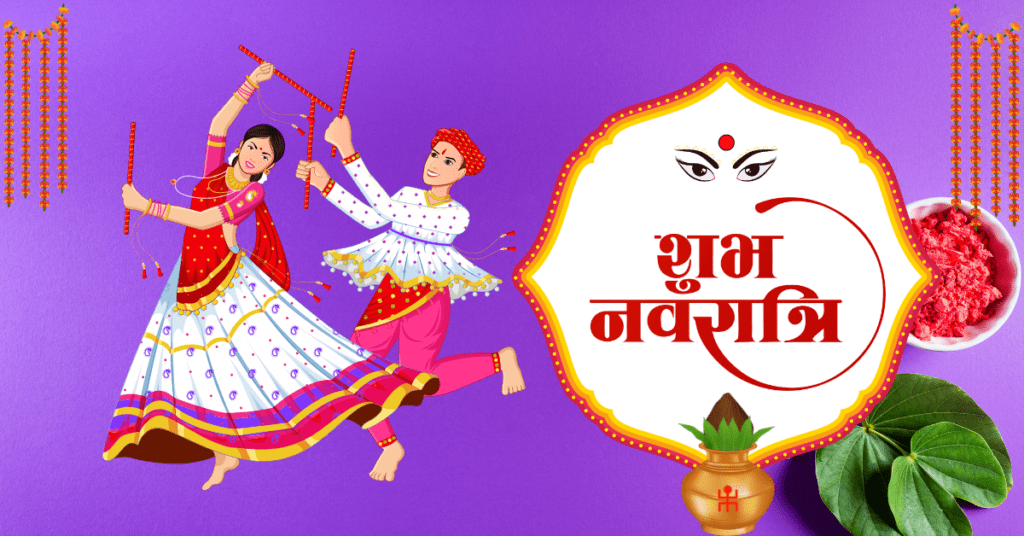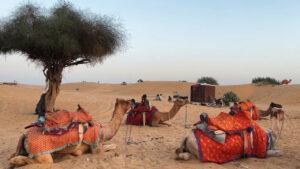Shardiya Navratri Fastival
Shardiya Navratri is an auspicious Hindu festival that celebrates the divine feminine principle and the goddess Durga. In 2024, Navratri will be observed from October 3 to October 12. Each of the nine nights is dedicated to a different form of the goddess, symbolizing various aspects of spiritual and physical strength. Significance of each day and offers guidance on how to observe the festival through fasting, prayers, and devotion.
Navratri 2024 Dates
- Start Date: October 3, 2024 (Thursday)
- End Date: October 12, 2024 (Saturday)
Shardiya Navratri 2024: Navratri Days and Dates
Day 1: Shailaputri (October 3) – Ghatasthapana, Shailputri Puja
- Significance: Shailaputri is the daughter of the mountains, symbolizing purity and strength. She is depicted riding a bull and holding a trident and a lotus.
- Observance: Begin the festival with prayers to invoke her blessings. Fast by consuming fruits and milk. Light a diya (lamp) and chant mantras related to Shailaputri.
Day 2: Brahmacharini (October 4) – Brahmacharini Puja
- Significance: Brahmacharini represents self-discipline and austerity. She signifies the pursuit of knowledge.
- Observance: Observe a strict fast. Engage in prayers for knowledge and wisdom. Offer white flowers and fruits to the goddess.
Day 3: Chandraghanta (October 5) – Chandraghanta Puja
- Significance: Chandraghanta is the goddess of bravery and power, depicted with a crescent moon on her forehead. She is known for her fierce nature in battling evils.
- Observance: Decorate the altar with yellow flowers and perform Homa (sacred fire ritual). Make offerings of tea or sweet dishes.
Day 4: Kushmanda (October 6) – Kushmanda Puja
- Significance: Kushmanda is known as the creator of the universe and is believed to have the power to grant wealth and health.
- Observance: Fast this day and offer pumpkin-based dishes. Light lamps and chant her mantras for abundant health.
Day 5: Skandamata (October 7) – Skandamata Puja
- Significance: Skandamata is the mother of Lord Kartikeya, symbolizing maternal power and companionship.
- Observance: Offer bananas and sweets, singing hymns in her praise while meditating on maternal love and guidance.
Day 6: Katyayani (October 8) – Katyayani Puja
- Significance: Katyayani represents valor and is often associated with the tale of killing the demon Mahishasura.
- Observance: Day is suitable for group prayers. Offer ghee-based sweets and engage in community celebrations like Garba dancing.
Day 7: Kalratri (October 9) – Kalaratri Puja
- Significance: Kalratri is the fierce form of Durga, embodying the power to vanquish evil. She is a protector of her devotees.
- Observance: Fast strictly, avoid any intoxicants, and meditate for protection. Light auspicious lamps and offer black items like black grams to emphasize her fierce form.
Day 8: Mahagauri (October 10) – Mahagauri Puja
- Significance: Mahagauri symbolizes purity, serenity, and patience. She is often depicted in white attire, representing the state of bliss.
- Observance: Prepare a special meal with white items. Spend time in devotion and chanting, asking for peace and serenity in life.
Day 9: Siddhidatri (October 11) – Siddhidatri Puja
- Significance: Siddhidatri fulfills all desires and grants spiritual powers. She represents spiritual enlightenment and accomplishments.
- Observance: Day of thanksgiving. Offer diverse foods, engage in silence, and express gratitude through prayers.
Day 10: Vijayadashami (October 12) – Vijayadashami (Dussehra)
- Significance: Festival culminates in Vijayadashami, celebrating the victory of good over evil, represented by the goddess’s triumph over Mahishasura.
- Observance: Celebrate by participating in community events, ritual flame offerings, and immersing effigies of Ravana in water, symbolizing the victory of righteousness.
How to Observe Navratri Festival 2024
- Fasting: Decide your fasting plan. Some people consume only fruits and milk, while others may choose a complete fast. Maintain a balanced diet during this period, focusing on purity.
- Daily Pooja: Set up an altar dedicated to the goddess, ensuring you have her images or idols. Perform daily pooja, reciting prayers, and offering flowers, fruits, and sweets.
- Community Involvement: Participate in local cultural events such as Garba or Dandiya nights, fostering a sense of community and joy.
- Meditation and Reflection: Use this period for self-reflection, meditation, and spiritual growth. Engage in reading scripture, listening to devotional music, or participating in group discussions on the significance of the goddess.
- Charity: Navratri is a time for giving. Consider donating to charities or helping those in need as a way of spreading blessings and goodwill.
Navratri FAQs
What is Navratri?
Navratri is a Hindu festival dedicated to the worship of Goddess Durga and her nine forms. It is celebrated over nine nights and ten days, symbolizing the victory of good over evil.
When is Navratri celebrated?
Navratri is celebrated four times a year, but the most popular ones are:
- Chaitra Navratri: March-April
- Shardiya Navratri: September-October
What are the nine forms of Goddess Durga worshipped during Navratri?
Each day of Navratri is dedicated to a different form of Goddess Durga:
- Shailputri
- Brahmacharini
- Chandraghanta
- Kushmanda
- Skandamata
- Katyayani
- Kalaratri
- Mahagauri
- Siddhidatri
What is the significance of fasting during Navratri?
Fasting during Navratri is believed to purify the body and mind. It is also a way to show devotion and seek blessings from the Goddess.
How do different regions celebrate Navratri?
Navratri celebrations vary across India:
- In Gujarat, people perform Garba and Dandiya Raas dances.
- In West Bengal, it is celebrated as Durga Puja with grand pandals and idol immersions.
- In Maharashtra, people set up Golu (a display of dolls) and perform traditional dances.
What is the significance of Dussehra at the end of Navratri?
Dussehra, also known as Vijayadashami, marks the end of Navratri. It celebrates the victory of Lord Rama over the demon king Ravana, symbolizing the triumph of good over evil.
Shardiya Navratri is a time for spiritual renewal, devotion, and celebration of feminine energy. By observing the daily significance and practices, individuals can deepen their connection to the divine and celebrate the triumph of good over evil. Festival with love, joy, and devotion, and let the goddess’s blessings guide you toward prosperity and peace in the coming year.







